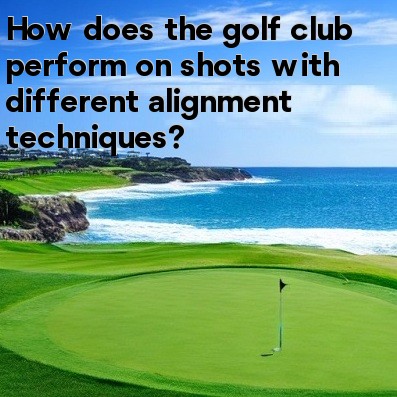
How Alignment Techniques Impact Golf Club Performance
Golf is a game that requires precision and accuracy, both in terms of the golfer's swing and the alignment of the golf club. The alignment technique used by a golfer can have a significant impact on the performance of the golf club on each shot.
When it comes to alignment techniques, there are primarily two approaches that golfers commonly use: open alignment and square alignment.
Open Alignment:
- An open alignment technique involves positioning the golfer's body and golf club slightly to the left (for a right-handed golfer) of the target line.
- This technique is often used to achieve a fade or slice shot, as it promotes an out-to-in swing path.
- When using open alignment, the golf club tends to strike the golf ball with an open face, imparting clockwise spin on the ball.
- This spin causes the ball to curve from left to right (for a right-handed golfer) in the air.
- Open alignment can be particularly useful in situations where the golfer needs to navigate obstacles or shape the ball around a dogleg.
Square Alignment:
- A square alignment technique involves positioning the golfer's body and golf club parallel to the target line.
- This technique is commonly used to achieve a straight shot, as it promotes an online swing path.
- When using square alignment, the golf club strikes the golf ball with a square face, imparting minimal spin on the ball.
- This results in the ball traveling straight towards the target.
- Square alignment is generally favored by golfers when aiming for accuracy and consistency.
Now, let's analyze how the alignment techniques impact the performance of the golf club:
1. Open Alignment: When using open alignment, the golf club is likely to strike the golf ball with an open face. This leads to two main outcomes:
- a) Increased Side Spin: The open face angle causes the golf ball to spin clockwise (for a right-handed golfer). This results in a fade or slice shot, where the ball curves from left to right in the air.
- b) Loss of Distance: The open face angle also causes a loss of power, as the golf club is not able to transfer maximum energy to the ball.
2. Square Alignment: Using square alignment allows the golfer to strike the golf ball with a square face, resulting in the following effects:
- a) Minimal Side Spin: With a square face angle, the golf ball experiences minimal spin. This reduces the chances of the ball curving in the air and promotes straighter shots.
- b) Maximum Distance: The square face angle enables the golf club to achieve optimal energy transfer to the ball, resulting in maximum distance.
Overall, choosing the appropriate alignment technique depends on the desired outcome of the golf shot. Open alignment may be preferred when aiming for a fade or slice, while square alignment is often the go-to technique for straight shots.
It's important for golfers to practice and experiment with different alignment techniques to understand their impact on club performance. Finding the right alignment technique can greatly improve accuracy, control, and consistency in the game of golf.





